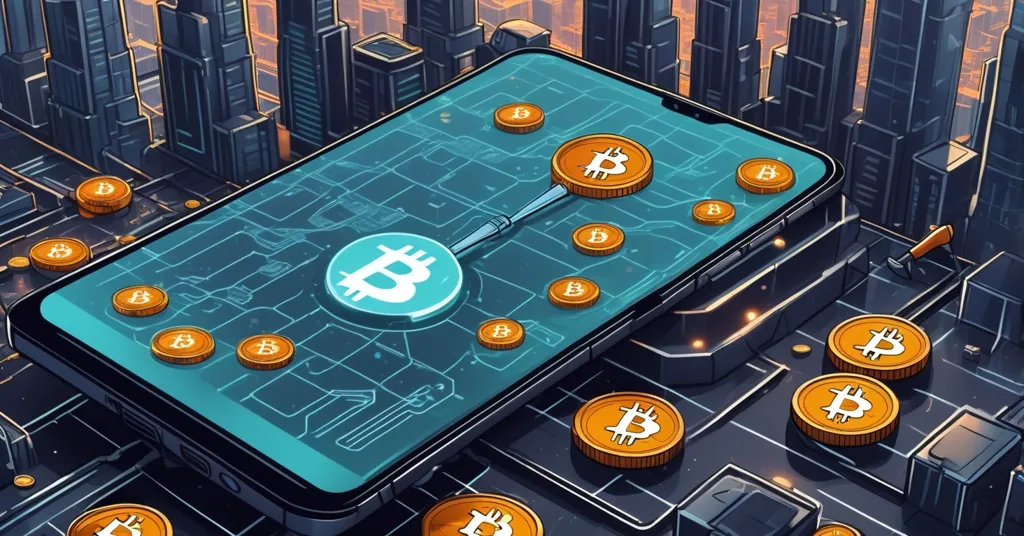Bitcoin Solaris Launches Mobile-First Mining: BTC-S Token Now Mineable via Smartphone

Bitcoin Solaris: Revolutionizing Crypto Mining Through Smartphones
Bitcoin Solaris introduces a groundbreaking approach to cryptocurrency mining, allowing users to mine BTC-S directly from their smartphones via the Solaris Nova App. This shift from Monero’s hardware-intensive CPU mining to a mobile-first model aims to democratize the mining process.
- Bitcoin Solaris enables smartphone mining of BTC-S token.
- Monero’s mining required dedicated CPU power.
- Solaris Nova App facilitates easy and efficient mining.
- BTC-S token supply is capped at 21 million, similar to Bitcoin.
Forget about mining rigs that sound like jet engines. Bitcoin Solaris flips the script, allowing anyone to mine crypto while waiting for their morning coffee. With the Solaris Nova App, users can participate in the network from the convenience of their pocket, marking a significant leap in accessibility. Unlike Monero, which necessitated powerful CPUs and was less user-friendly, Bitcoin Solaris’s approach is designed for everyday use, running in the background without draining your phone’s battery excessively.
The project leverages a method that uses Solana’s technology to make transactions faster and cheaper, known as a Layer-2 solution. This enables seamless mobile mining. Rewards in Bitcoin Solaris are not tied to hardware performance but to user activity and consistency. This innovative model aligns with the industry’s push towards inclusivity, potentially leading to a more equitable distribution of mining rewards.
Security and transparency are paramount for Bitcoin Solaris. The project’s smart contracts have been audited by Cyberscope and Freshcoins, ensuring public accountability. Additionally, the team is Know Your Customer (KYC) verified, a process that adds a layer of trust by verifying the identity of team members.
Bitcoin Solaris’s tokenomics are designed with a fixed total number of tokens that will ever be created, known as a capped supply, at 21 million BTC-S tokens, mirroring Bitcoin’s model. During the presale, tokens are available, with the price set at 2 USDT each in the current phase. Interested users can visit bitcoinsolaris.com, connect a Solana-compatible wallet, and participate in the presale. For more detailed information on the tokenomics, visit this link.
While this mobile-first mining approach promises to enhance network decentralization by inviting more participants into the fold, it’s not without its challenges. Concerns about the impact on smartphone battery life and scalability issues are valid. Bitcoin Solaris aims to address these through ongoing development, but it’s crucial to keep an eye on how these issues evolve.
The broader implications of Bitcoin Solaris’s approach are significant. It aligns with the ethos of decentralization and the push towards making cryptocurrency more accessible to everyday users. This move could pave the way for further developments in mobile-first applications within the blockchain space, potentially reshaping how we interact with and benefit from decentralized technologies. For insights on its impact on decentralization, check out this analysis.
As champions of decentralization and effective accelerationism, we recognize the potential of Bitcoin Solaris to disrupt the status quo. While Bitcoin remains the gold standard, projects like Bitcoin Solaris complement the ecosystem by filling niches that Bitcoin doesn’t serve directly. However, it’s essential to approach such innovations with a critical eye, aware of the crypto space’s potential for scams and overhyped projects.
For those interested in the community’s experience with Bitcoin Solaris mobile mining, check out discussions on Reddit.
Here are the key questions and takeaways:
- What is the main difference between Bitcoin Solaris and Monero mining?
Bitcoin Solaris allows mining on smartphones through the Solaris Nova App, while Monero required dedicated CPU power and was less accessible to everyday users.
- How does Bitcoin Solaris ensure the security and reliability of its smart contracts?
The smart contracts are audited by Cyberscope and Freshcoins, and the team is KYC verified, ensuring public accountability and security.
- What are the benefits of Bitcoin Solaris’s mobile mining approach?
It lowers the barrier to entry, allowing more people to participate in mining without the need for specialized hardware, and rewards are based on user activity rather than hardware performance.
- How can someone get started with mining BTC-S?
By visiting bitcoinsolaris.com, connecting a Solana-compatible wallet, joining the presale, and buying BTC-S at 2 USDT each during the current phase. For step-by-step guidance, refer to this Quora thread.
- What is the token supply model of Bitcoin Solaris?
It has a capped supply of 21 million BTC-S tokens, similar to Bitcoin, with tokens available during the presale at 2 USDT each.
Rewards are tied to usage and interaction. You don’t need to compete on hash rate. You don’t need to configure GPUs.
To learn more about Bitcoin Solaris and its potential impact on the crypto ecosystem, explore their website and stay informed about this innovative project. For a deeper dive into the technology behind Bitcoin Solaris, visit the Bitcoin Solaris wiki.



